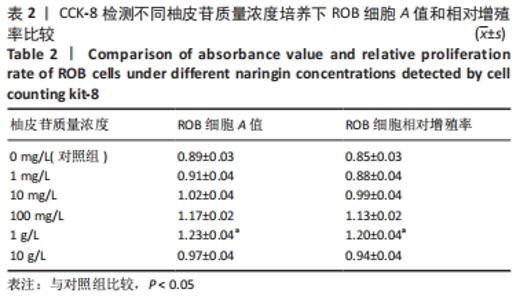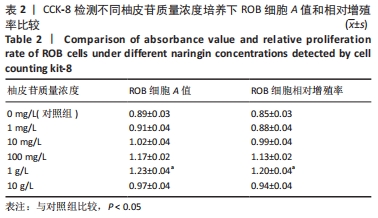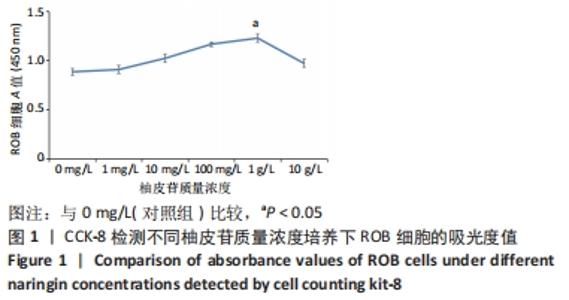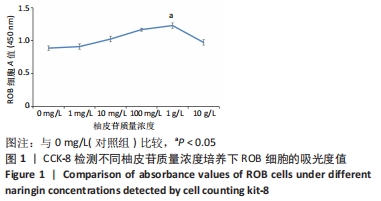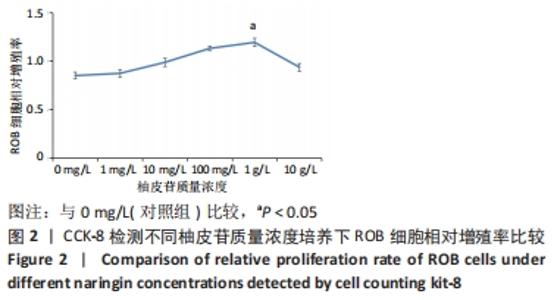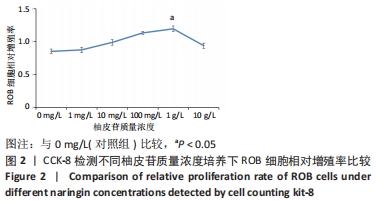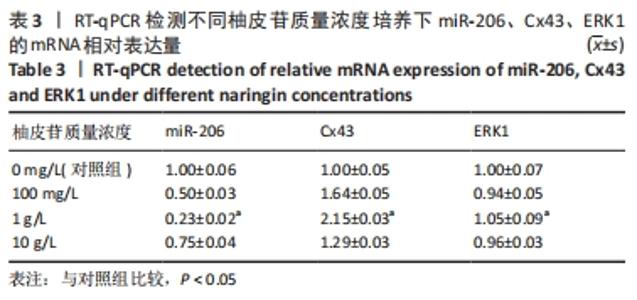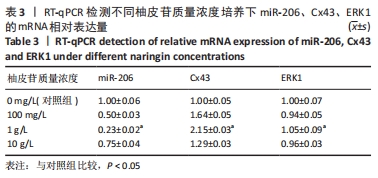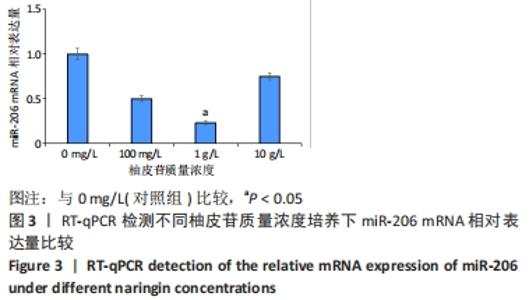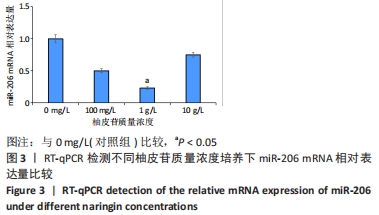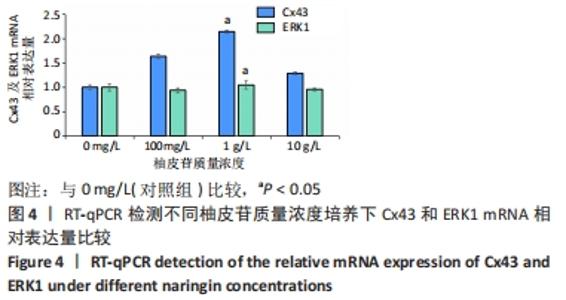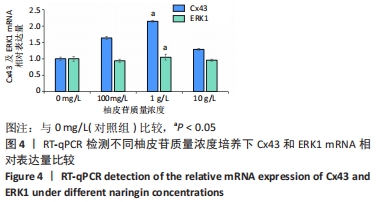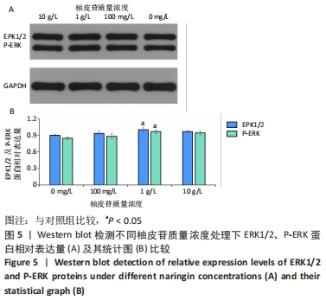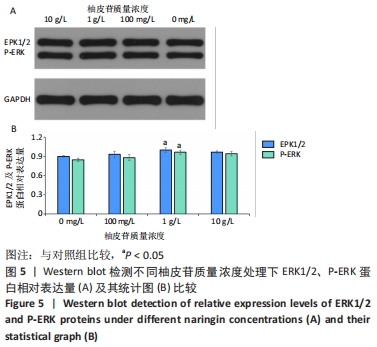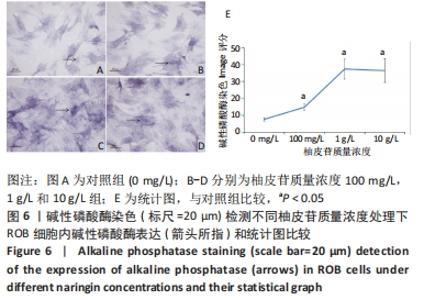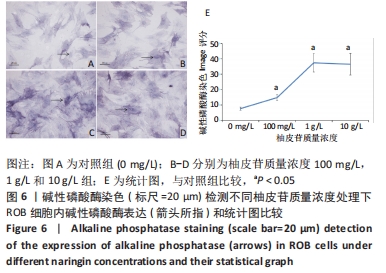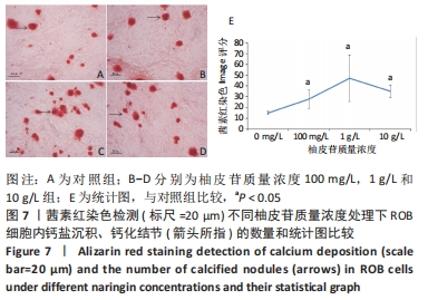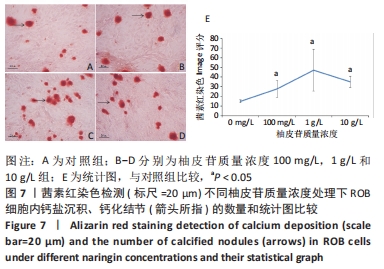[1] 甘东浩, 陈德强, 冯蓬, 等.基于网络药理学探讨骨碎补抗骨质疏松的物质基础及作用机制[J].中国实验方剂学杂志,2019,25(13): 186-191.
[2] CHEN R, QI QL, WANG MT, et al. Therapeutic potential of naringin:an overview. Pharm Biol. 2016;54(12):3203-3210.
[3] Ciesla M, Skrzypek K, Kozakowska M, et al. MicroRNAs as biomarkers of disease onset. Anal Bioanal Chem. 2011;401(7):2051-2061.
[4] FAN J, LI J, FAN Q. Naringin promotes differentiation of bone marrow stem cells into osteoblasts by upregulating the expression levels of microRNA-20a and downregulating the expression levels of PPARgamma. Mol Med Rep. 2015;12(3):4759-4765.
[5] MCCARTHY JJ. MicroRNA-206: the skeletal musclespecific myomiR.Biochim Biophys Acta. 2008;1779(11):682-691.
[6] INOSE H, OCHI H, KIMURA A, et al. A microRNA regulatory mechanism of osteoblast differentiation. Proc Natl Acad Sci U S A. 2009;106(49): 20794-20799.
[7] ZHANG ZH, JIN AM, YAN DL. MicroRNA206 contributes to the progression of steroidinduced avascular necrosis of the femoral head by inducing osteoblast apoptosis by suppressing programmed cell death 4. Mol Med Rep. 2018;17(1):801-808.
[8] LIU G, LUO GB, BO ZD, et al. Impaired osteogenic differentiation associated with connexin 43/microRNA-206 in steroid-induced avascular necrosis of the femoral head. Exp Mol Pathol. 2016;101(1):89-99.
[9] 刘小坡,冯云波,曹国龙,等.柚皮苷对老年大鼠骨质疏松性骨折愈合的影响[J].中国临床药理学杂志,2020,36(9):1117-1120.
[10] 刘冲,曹慧,杨彩彩,等.柚皮苷调控miR-199a-5p/ECE1分子轴促进骨损伤修复[J].昆明医科大学学报,2020,41(6):32-38.
[11] LI CH, WANG JW, HO MH, et al. Immobilization of naringin onto chitosan substrates by using ozone activation. Colloids Surf B Biointerfaces. 2014;115:1-7.
[12] LI N, JIANG Y, WOOLEY PH, et al. Naringin promotes osteoblast differentiation and effectively reverses ovariectomy-associated osteoporosis. J Orthop Sci. 2013;18(3): 478-485.
[13] WU JB, FONG YC, TSAI HY, et al. Naringin-induced bone morphogenetic protein-2 expression via PI3K, Akt, c-Fos/c-Jun and AP-1 pathway in osteoblasts. Eur J Pharmacol. 2008;588(2-3):333-341.
[14] 李风波, 孙晓雷, 马剑雄, 等.柚皮苷对破骨细胞分化的影响[J].中国中药杂志,2015,40(2):308-312.
[15] TW T, YE C, WH Y, et al. Naringin suppress chondrosarcoma migration through inhibition vascular adhesion molecule-1 expression by modulating miR-126. Int Immunopharmacol. 2014;22(1):107-114.
[16] CHEN Y, YANG YR, FAN XL, et al. miR-206 inhibits osteogenic differentiation of bone marrow mesenchymal stem cells by targetting glutaminase. Biosci Rep. 2019;39(3):R20181108.
[17] ANDERSON C, CATOE H, WERNER R. MIR-206 regulates connexin43 expression during skeletal muscle development.Nucleic Acids Res. 2006;34(20):5863-5871.
[18] LIMA F, NIGER C, HEBERT C, et al. Connexin43 potentiates osteoblast responsiveness to fibroblast growth factor 2 via a protein kinase C-delta/Runx2-dependent mechanism. Mol Biol Cell. 2009;20(11):2697-2708.
[19] LIN FX, ZHENG GZ, CHANG B, et al. Connexin 43 modulates osteogenic differentiation of bone marrow stromal cells through GSK-3beta/beta-catenin signaling pathways. Cell Physiol Biochem. 2018;47(1):161-175.
[20] LEE CH, HUANG YL, LIAO JF, et al. Ugonin K promotes osteoblastic differentiation and mineralization by activation of p38 MAPK-and ERK-mediated expression of Runx2 and osterix. Eur J Pharmacol. 2011; 668(3):383-389.
[21] 杨洋. CXCL2通过抑制成骨细胞分化影响骨质疏松发病的机制研究[D].广州:南方医科大学,2019.
[22] GUPTA A, LESER JM, GOULD NR, et al. Connexin43 regulates osteoprotegerin expression via ERK1/2-dependent recruitment of Sp1.Biochem Biophys Res Commun. 2019;509(3):728-733.
[23] KRETLOW JD, MIKOS AG. Review: mineralization of synthetic polymer scaffolds for bone tissue engineering. Tissue Eng. 2007;13(5):927-938.
[24] KAZEMZADEH-NARBAT M, NOORDIN S, MASRI BA, et al. Drug release and bone growth studies of antimicrobial peptide-loaded calcium phosphate coating on titanium. J Biomed Mater Res B Appl Biomater. 2012;100(5):1344-1352.
[25] HONG MH, SON JS, KIM KM, et al. Drug-loaded porous spherical hydroxyapatite granules for bone regeneration. J Mater Sci Mater Med. 2011;22(2):349-355.
|
